Metal fabrication is a service that’s needed in a large variety of industries. The automotive, shipbuilding, aerospace, steel-electronics, and medical industry all rely on fabricated metal parts to deliver their own services. Without those supplies, each of the industries would have to make dramatic changes to their processes and business plans.
Metal fabrication is a somewhat complicated process as well, taking raw materials and transforming them into usable parts via the use of different machinery. And to entirely do the job, a fabrication shop will need a myriad of different machines to serve different purposes.
These shops take in raw materials, usually sheet metal, tubes or rods, and have the capability to cut, bend, punch, stamp, machine, and weld the material to produce any metal piece required which can then be assembled into the final product.
Here is a list of machines that can be found in a fabrication shop which transforms the raw material into the product intended.
Laser Machine
Lasers are being used in a myriad of industries these days due to their pinpoint accuracy. They’re a vital asset for these industries which have very little room for error. It works by programming the CNC (Computer Numerical Control) to direct the laser head to cut the piece with an accuracy of up to 10 micrometers.
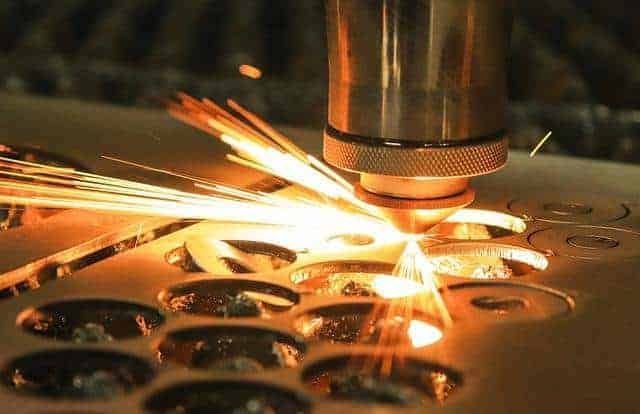
For the purposes of metal fabrication, the laser head produces thermal energy that cuts through the material by melting, vaporizing, burning, or blowing away the material at the cut.
In addition to cutting, laser equipment can also weld parts together or be able to surface treat the material.
Plasma Machine
Plasma machinery requires that the metal material being cut can conduct electricity; otherwise, this machine would not work. The machine can typically cut metals like copper, brass, steel, stainless steel and aluminum, but anything conductive works.
The machine shoots a jet of compressed gas through the plasma torch head which is directed by the CNC, like the laser cutter, and creates an electrical circuit with the metal material by use of a grounding clamp. An electrical arc is then triggered between the torch head and a nearby electrode, which ionizes and superheats the stream of plasma and provides enough velocity and heat to blow the hot molten metal away, which causes the cut.
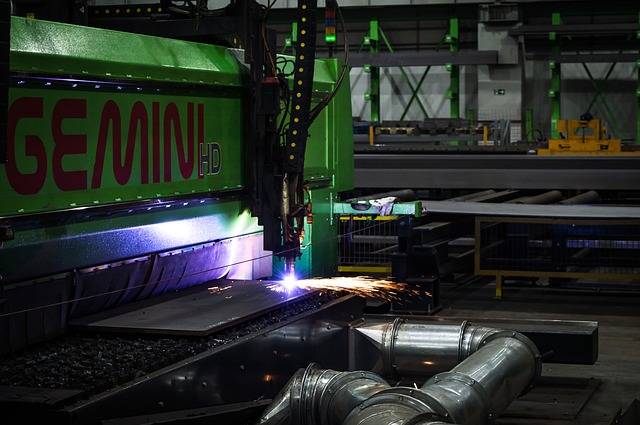
In addition to cutting, plasma machines often have the capability of welding as well. Any man with a stick welder and a grinder in his garage might call themselves a fabrication shop, but a real one will use plasma machines for the job.
The gases used for the plasma mixture are typically compressed air, nitrogen, oxygen and argon-hydrogen mixtures, and depending on which ionized gas is used, you will have a different cutting capability and a different finish on the cut surface.
Water Jet Machine
A water jet cutter is an ideal method of cutting since it can cut without raising the temperature of the metal too high. That’s especially valuable since high temperatures can cause some changes to the metal; without the heat, no slag is created.
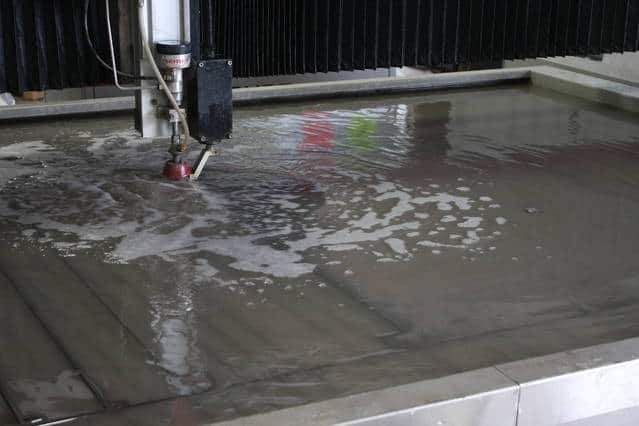
An abrasive is added to the high-pressure stream of water, which allows the water to cut without any issues. Water jets can offer the precision of down to 0.005 inches.
Shearing Machines
Shearing machinery is probably the simplest and most used machinery found in fabrication shops. It is often one of the first machines that the sheet metal will see.
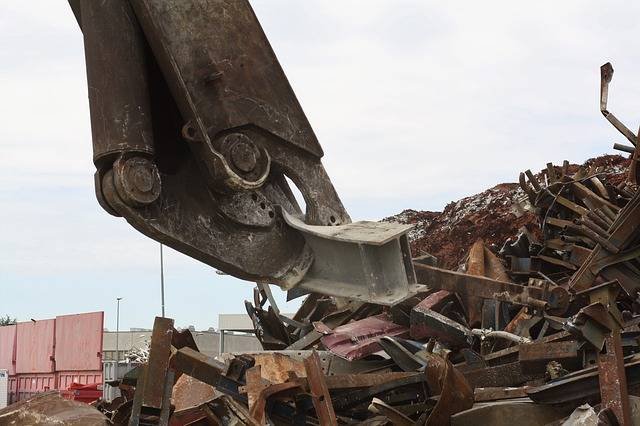
Either a punch or a moving blade pushes the material against a die, resulting in a straight line separation or a hole being punched through the material.
This method does not offer the same sort of precision as the previously mentioned methods and often needs a secondary operation, like grinding, to clean up the cut surface. It is commonly used in the early stages of metal sheet product where precision is not vital.
Brake Machines
The Brake Machine is what can be used to bend a sheet of metal. It consists of placing the metal sheet onto a flat surface, clamping it down firmly on the one end and, through the use of hydraulics, the front-hinged gate of the machine applies force to the portion of the sheet to allow it to bend. The sheet can be bent to any angle up to 120 degrees, beyond which the metal can begin to yield depending on its thickness.
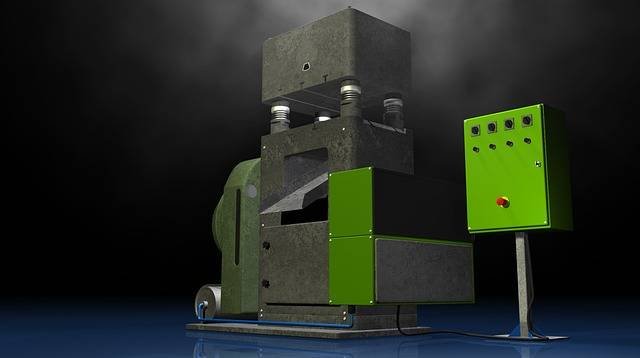
In addition to bending, the brake machine can form the piece into different shapes, such as the hood of a car for example.
The Process
If a fab shop gets an order to produce a part, they may order sheet metal from any particular sheet metal fabrication shop, which used a shearing machine to separate the sheets into one of the standard metal sheet sizes, then may punch out any holes where a bolt or other piece may be inserted. Then the sheet may be cut into multiple parts using a laser, plasma, or water jet machine, depending on the precision required. Once cut, if the piece is to be bent or formed into another shape, the brake mechanism may be used for that. Finally, if the part needs to be welded that will be done now otherwise the part can be assembled or sent to an assembly plant to be assembled into the final product it will make.
Fabrication shops often can use their capabilities for producing products of their own or other businesses might contract out their work to fabrications shops whose work they know and trust.
It should also be noted that though this machinery is a wonder for our time, it certainly has been the cause of many fingers to be lost so safety precautions should be taken if using or even near this machinery.

